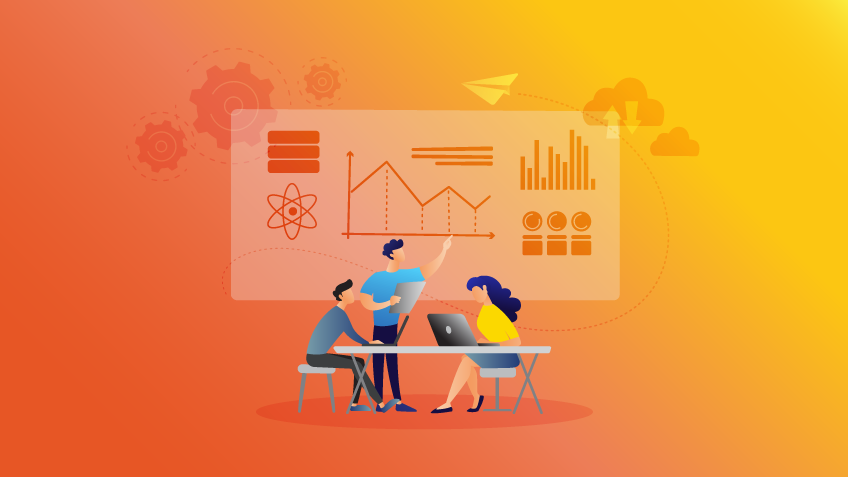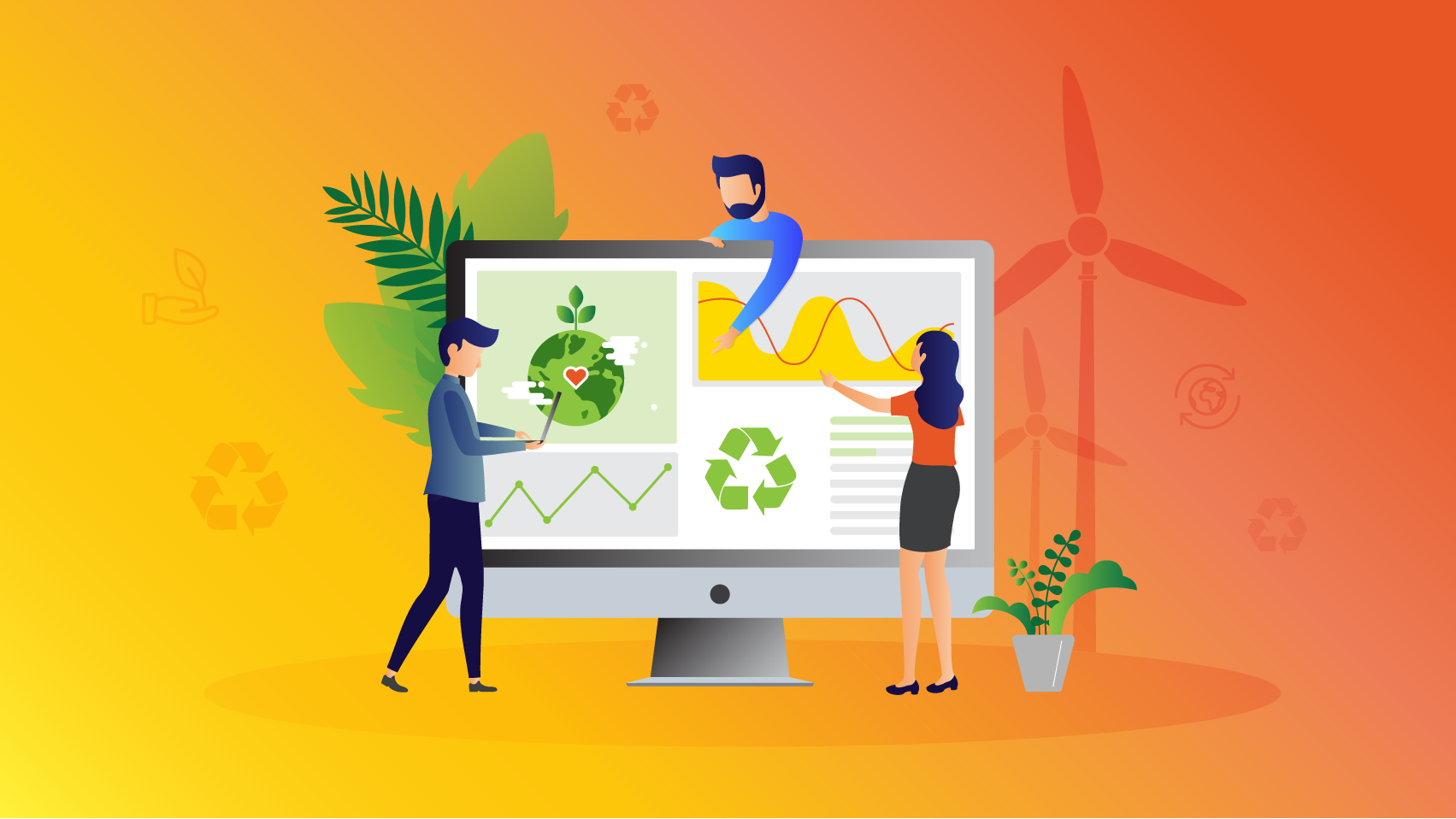Why ‘modern Business Intelligence‘ is so important for your organisation in order to become more competitive?
Modern BI gives you the flexibility to build a data-driven culture where you can make decisions based on facts rather than guesses or assumptions. Instead of relying solely on EDWs (enterprise data warehouses), like traditional BI, it comes with a set of new visual interactive tools to tackle all kinds of tasks from IT to workflow. BI is no longer just a project; the goal is now a data-driven company in which BI connects data with its end users through ETL (extract, transform and load) and visualisation tools. What we want here is to demonstrate how modern BI can bring value to your company and we’ll do that via the following trilogy.
1. Accessing data
Connecting to data has become so much easier. Nowadays you can connect to every type of DB (database), to a set of files, like PDF or excel, and to APIs or data from the web with web data connectors, etc. You can do this from a BI tool such as Tableau Desktop or Power BI, which let you connect directly to these data sources. Think about it; many companies rely on Excel as an output for their departmental information. Imagine that you prepare monthly report files on sales figures. How best can you compare your sales performance for 2008 against that of 2018? Are you going to open all those Excel files? How can you build a sales vs region map by year? And drill down to data for every month? Well, fortunately, modern BI tools can give you all this. You get the capability to quickly connect your Excel file, or a load of Excel files (by joins or relationships) to Tableau or Power BI, which means you’re acquiring a real upgrade of analysis efficiency because in a matter of minutes you can clean, normalise and use all the data to build dynamic reports and dashboards.
Bear in mind that sometimes data isn’t completely error-free, so a cleaning process must be carried out, which you can do easily in the tools mentioned above with just a few clicks. However, if you have many complex files, which need to perform complicated calculations, or you want to join too many different data sources, you’ll need an ETL tool like Pentaho, Tableau Prep or SSIS (SQL Server Integration Services) and a database into which your ETL can drop the data from all those sources.
2. Building visualisations
All right, connecting data has new fancy options and is now much faster, but the coolest thing is building the visualisations. Forget those old static charts and tables or maps. Nowadays, BI solutions give you the ability to construct every type of graph to display information exactly as you want. Using a single graph, in few minutes, you can create a visualisation by year with the possibility of drilling down to individual days; or you can drill down by hierarchies, for example, showing profit first by product group and even further until you reach profit by individual product. You have the ability to incorporate filters into your visualisations in order to be more precise with your analysis. You can build parameters to enable you to see different KPI’s (key performance indicators) by groups of products meaning that in the same visualisation, you can explore profit or number of sales or margin by product. Nevertheless, you can explore raw data by creating tables with all the information you need.
Alongside these cool attributes, there’s another important functionality. You can explore and analyse all the underlying data. Choosing a group or clicking on a specific point on your graph, you can promptly see the information behind the values. With this, you’re never working blind, and guess what, you can export these pieces of data to file. Using this functionality with the visualisations, you can do your own exploration and analysis in which you’ll be able to find trends or outliers and take interesting conclusions.
You arrive at a place where you’re able to create views that you can group in a super-dynamic dashboard full of filters and parameters that can be applied to all your graphs, tables and maps. With dashboards, you can create data stories where you tell a story using snapshots of a specific dashboard to communicate data much easier and more consistently.
It gets even better because after constructing visualisations you can then share them with everyone in your company and decide who sees what.
3. Governance
If the visualisations are cool, imagine how awesome it is to easily share content with anyone in your company. Tools like Tableau or Power BI give you the opportunity to bring all your content together in one place, divided by project or department. We’re talking about your data sources and dashboards in which you can create groups of users and decide their permissions. Imagine that you build a marketing dashboard and publish it via the online service. You have users in all your company’s different departments but you only want those in marketing to be able to see this dashboard. To achieve this you create a group called Marketing, add all your marketing users to it and grant them permission to see your content, while for other groups, such as Finance, for example, you deny permission.
The online service is managed either through a physical server or based in the cloud, with a high level of security. To connect, you can use login directories such as Active Directory, or you can create one locally. You can embed your interactive visualisations into webpages, which will refresh any time that you change the underlying data. Defining schedules and alerts is something you’ll find really useful. Schedules for refreshing data, for example, and alerts for when a KPI reaches a specific limit. Despite this, you are able to monitor everything: who has accessed what, performance, space usage, tasks, etc.
The best part of all of this is the fact that your IT personnel are still an important part of managing access to data, but with the right software, every user is empowered to view, customise, create and edit dashboards and reports or analyse data in far less time.
Final thoughts
As we said, BI is no longer simply a project. BI is a living being in your company. Imagine your company as a city and BI as a data speed highway flowing freely between every corner of that city. Scalability becomes very effective as you can upgrade your departments to the digital culture in less than no time or upgrade your old digital BI structures, which will then become even faster.
The given value of monitoring, making decisions, analysing information quickly or sharing insights between people and departments is one of many other strengths that BI can offer you, although business users become more autonomous to do so.
For sure, modern BI is a winner that caught the speed of our fast, competitive, changing world and earned its place right next to business fabric, and this is how XpandIT DIaaS (Data Innovation as a Service) became real. By defining your strategy, deploying, maintaining and supporting a robust data solution, and helping you build your speed highway, we can help you define the process of positioning yourself as a competitive data-driven company and of course, a winner because when you win, we win too!












